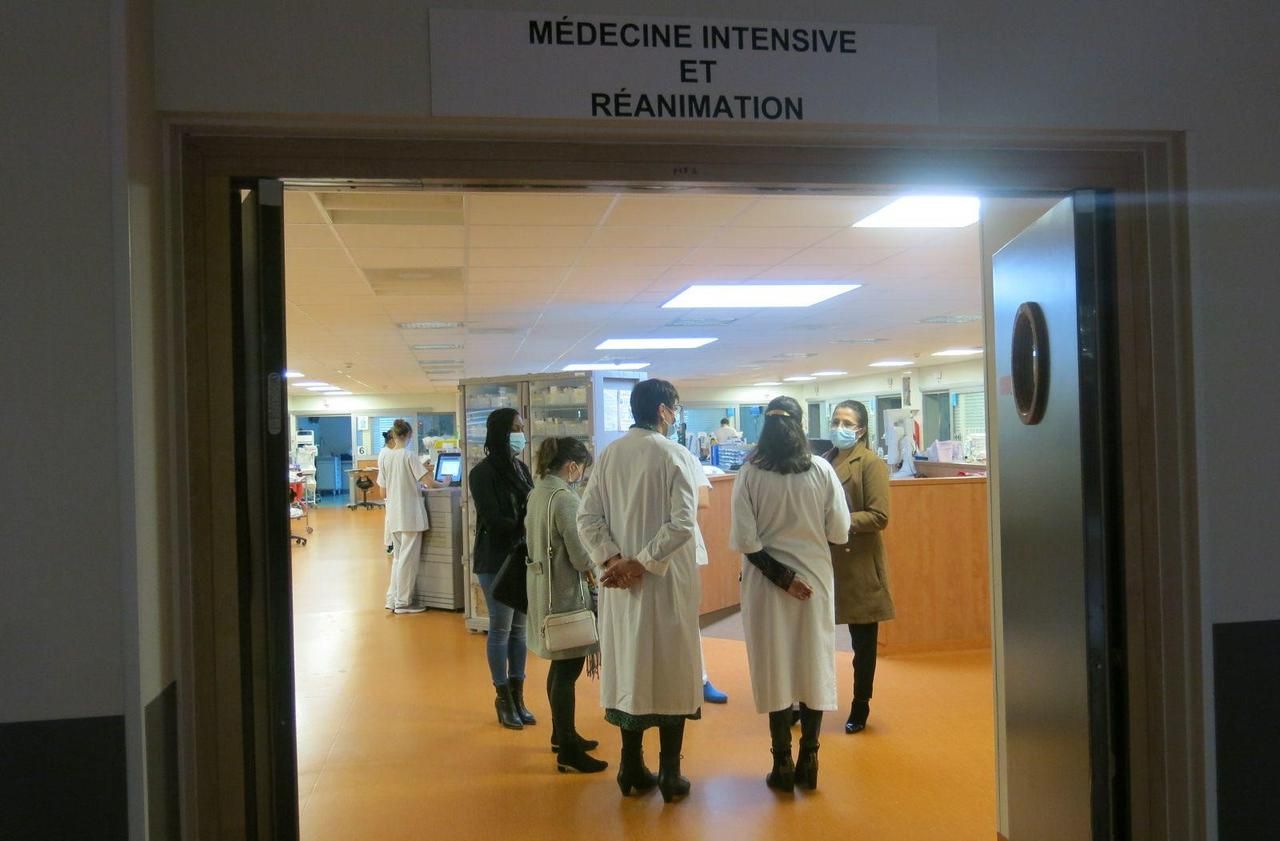Even more than elsewhere, the medical equipment provided by the region to the Robert-Ballanger hospital, in Aulnay-sous-Bois (Seine-Saint-Denis), so that it has twelve new resuscitation beds, are welcome. In mid-January, the president of the Ile-de-France regional council, Valérie Pécresse (Libres!), Announced the deployment of 500 modular beds by April. Ten million euros have been mobilized, including seven from European credits.
“It is not a question of beds as such but of the equipment necessary for the operation of a resuscitation bed”, specifies Catherine Leguay-Portada, the deputy director of the Ballanger hospital. In Aulnay-sous-Bois, twelve surveillance monitors were delivered at the end of last week, as well as two Philips brand respirators, currently unused. “But it’s only a matter of days”, fears the person in charge of the place.
Here, the intensive care unit has 18 beds, the vast majority of which are currently occupied by patients with Covid-19. In addition, there are 12 beds installed in the cardiology intensive care unit. Covid-19 represents a third of them.
“Modular beds are an agile and flexible concept that allows hospitals in the Paris region to adapt to exceptional situations, during an epidemic or at the time of an attack,” explains Farida Adlani. The vice-president (MoDem) of the regional council in charge of health was visiting this Wednesday morning to Robert-Ballanger, then to the hospital of Montfermeil, where part of the replaced equipment was according to her “obsolete”.
In emergencies, we see an “outbreak” of Covid cases
In Aulnay-sous-Bois, the arrival of these additional “beds” comes at a time when the number of contaminations continues to increase day by day. Already hard hit during the first wave of the epidemic, Seine-Saint-Denis currently has the incidence rate – the number of cases per week per 100,000 inhabitants – the highest in mainland France. An “outbreak” noted in the emergency room of Ballanger.
“For three to four days, we have recorded between 16 and 18 Covid patients per day, while there were between four and eight since January,” said a caregiver. “This weekend, we also found a few more South African variants, adds biologist Lydia Maisonneuve. The English variant remains in the majority, and it is the most serious. “
Some days, the occupancy rate of the intensive care beds here is close to 100%. Alexandre Avenel, resuscitator at Robert-Ballanger, struggles to hide his exasperation at the new wave he sees sweeping over the public hospital. He pleads for a new confinement, and quickly. “You have to bang your fist on the table,” he blurted out in front of Farida Adlani.

Newsletter The essentials of 93
A tour of the news in Seine-Saint-Denis and the IDF
—
“All the effort cannot rest on the public hospital, in particular in Seine-Saint-Denis, estimates Doctor Maisonneuve. The burden of the Covid epidemic must be the same everywhere. “
Only 80 permanent intensive care beds in the department
Especially since, unlike the first wave, patient transfers are becoming rarer. In spring 2020, eleven people hospitalized in Aulnay-sous-Bois had been taken to hospitals located in Nantes (Loire-Atlantique), Troyes (Aube) or Angers (Maine-et-Loire).
The parents were then simply informed. “From now on, we ask for the agreement of families and often, they slow down,” notes Lydia Maisonneuve. Moreover, “very few patients are transferable”, underlines Doctor Angélie Gentilhomme, who recalls that “Seine-Saint-Denis has a very obese population”. However, the total weight – patient and equipment – cannot exceed 110 kg during a transfer.
In its distribution of modular beds, the regional council wanted “to put the package where the epidemic flares”, says Farida Adlani. The elected does not hide her surprise when the doctors of Ballanger informed her that the hospitals of Seine-Saint-Denis have less than 80 permanent resuscitation beds. “It’s been a year since we told the ARS (Editor’s note: the regional health agency) that we are under-equipped, ”plague Alexandre Avenel.
–


